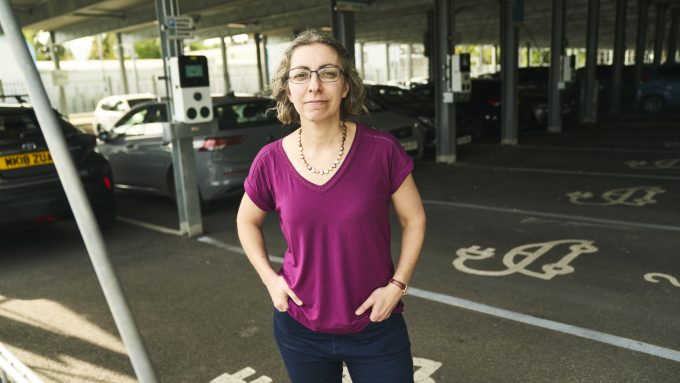
Transport innovators urged to better consider accessibility in their designs

Recipients of funding and support from the Transport Research & Innovation Grants programme spoke warmly of their experiences and encouraged other SMEs and academics to come forward for the next round of TRIG, which is open for applications, at the showcase in late May.
But it was a keynote address from James Lee of urban design practice Publica – where he spoke candidly about his poor experiences of public transport while growing up – that drew the loudest applause.
James is a wheelchair user and advocate for better accessibility and inclusion in the transport sector.

“As a disabled child growing up in London, my first brush with inaccessibility on the transport network was when my parents starting to think about which school to put me in. Buses often had no ramps, so that was not an option.”James Lee, Publica
Fast forward a few years and public transport accessibility started to improve, he added, but there were “still barriers to my everyday travel – the Tube network in London is not the greatest for accessibility, which is a by-product of building on Victorian infrastructure.”
While at university, James’s local station had a large flight of stairs to negotiate, “so I missed a lot of lectures as it felt like such a challenge to get there”.
The daily struggle proved too much and, as he put it, “drove me out of education”. As a result, James finished his university experience early.
In all aspects of life – from attending hospital appointments, to visiting family or spending time with friends – James’s plans were predicated by the question ‘Can I get there and back?’ – “and quite often, the answer was no.”
A few years later, James and his young family would try to catch a bus, but there was rarely space for both his wheelchair and their child’s pram. “My partner would take the first bus, as I waited for a second to come along,” he recalls.
Things are getting better, he says, but James is determined not to be labelled as ‘disabled’ because of his medical condition, but disabled by his environment, such as when he encounters a flight of stairs, or tries to board a train and there is no ramp.
Today, his overall aim is that “inclusion and accessibility are seen as a real business imperative, and not just a ‘nice to have’. It should be baked into our work right from the start.”
James left the audience with three final thoughts. “When thinking about developing accessibility and inclusion measures, you should be integrating the voices of disabled people into every stage of your design.”
Secondly, “built-in is better than bolt-on” – considering accessibility at the start “will save a huge amount of heartache and money”. And finally, when talking to colleagues about standards and regulations, all too often they are considered as the ‘ceiling’ of what is possible around inclusion.
“If we are really serious about accessibility and inclusion, we shouldn’t be thinking about the ceiling – but the floor,” he said. “And we should build up from there.”

Sector specialists give their views on transport innovation
Also at the event, delegates heard from a panel – chaired by session moderator Giulia Lorenzini, the Head of Regional and Local Growth Funding at Connected Places Catapult – what the key trends are for transport right now.
“Behaviour change and the opportunity of meeting net zero targets,” replied Motability Foundation innovation manager Harry Fisher. “People will have to think differently about how they transport their goods, and the journeys they make.”
“The use of digital twins, 5G connectivity and ‘the Internet of Everything’ are among game changing technologies which could be transformative and help make multi-million pound projects less costly to deliver.”Transport for London’s Senior Programme Manager Michael Kitching
Waleed Ahmed, the chief operating officer of accessibility company Transreport – and a proud TRIG alumni – praised the programme as “a vital conduit between research and business”, highlighting its role in driving innovation, generating commercial impact and unlocking export opportunities for the UK.
Dr Louise Reardon from the University of Birmingham urged everyone in the sector to “engage with the fund and their networks” to make sure the “great innovation research can support horizon scanning”.
Sharon Payne, the rural mobility manager of Transport East said that the work of TRIG is to “amplify what is happening” in the sector “to make sure research and innovation gets out to the people it is intended to reach, through the collective creativity and enthusiasm of our networks”.
Apply before 20 June to take part in the next round of the Transport Research & Innovation Grants programme.





